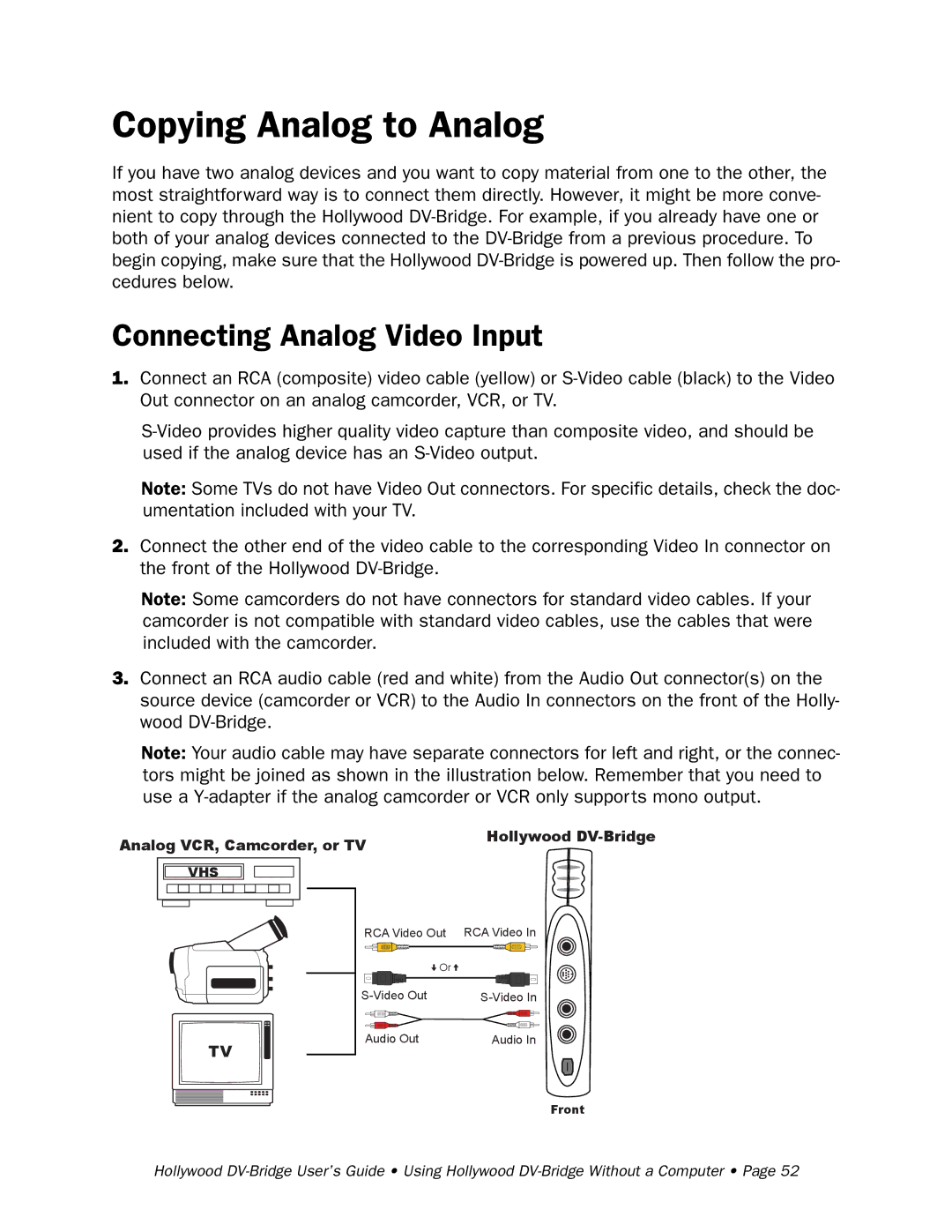
Copying Analog to Analog
If you have two analog devices and you want to copy material from one to the other, the most straightforward way is to connect them directly. However, it might be more conve- nient to copy through the Hollywood
Connecting Analog Video Input
1.Connect an RCA (composite) video cable (yellow) or
Note: Some TVs do not have Video Out connectors. For specific details, check the doc- umentation included with your TV.
2.Connect the other end of the video cable to the corresponding Video In connector on the front of the Hollywood
Note: Some camcorders do not have connectors for standard video cables. If your camcorder is not compatible with standard video cables, use the cables that were included with the camcorder.
3.Connect an RCA audio cable (red and white) from the Audio Out connector(s) on the source device (camcorder or VCR) to the Audio In connectors on the front of the Holly- wood
Note: Your audio cable may have separate connectors for left and right, or the connec- tors might be joined as shown in the illustration below. Remember that you need to use a
Analog VCR, Camcorder, or TV | Hollywood |
| |
VHS |
|
TV
RCA Video Out | RCA Video In |
Or |
|
Audio Out | Audio In |
Front
Hollywood
